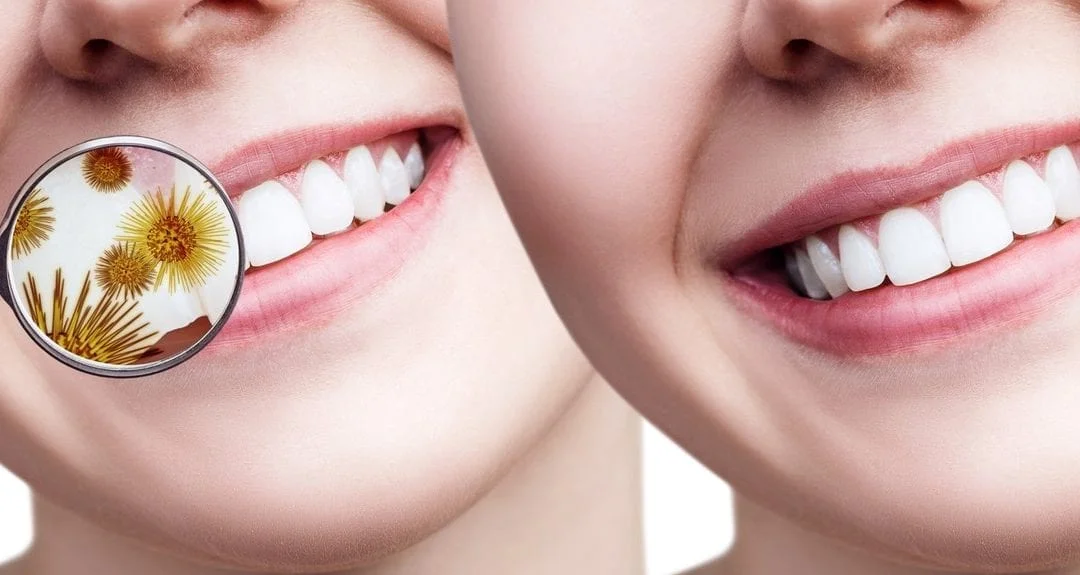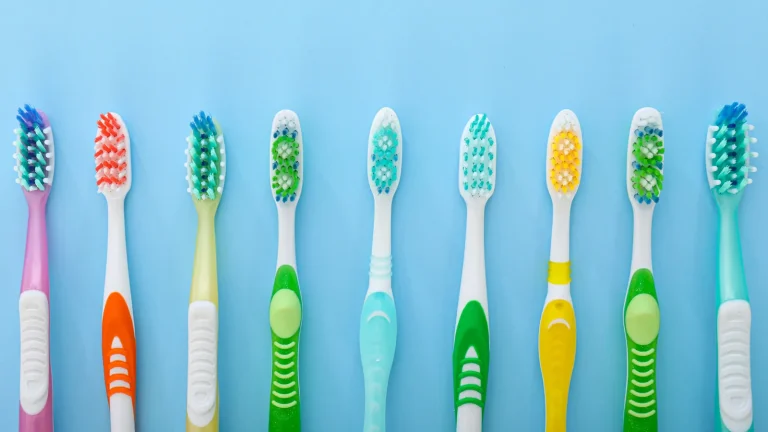Oil Pulling: Ancient Wisdom or Modern Myth?
Oil pulling, an ancient practice rooted in Ayurvedic medicine, has recently surged in popularity as a natural alternative for oral care. This technique involves swishing oil—typically coconut, sesame, or sunflower oil—in the mouth for 15–20 minutes, claiming to detoxify the body, whiten teeth, and improve overall oral health. But is oil pulling a legitimate health practice backed by science, or is it merely a modern wellness trend fueled by anecdotal claims?
As more people seek holistic approaches to health, oil pulling has become a topic of intrigue and debate. While some swear by its benefits, others remain skeptical, questioning its effectiveness compared to traditional oral care methods like brushing, flossing, and using mouthwash. This article dives into the origins of oil pulling, examines the scientific evidence behind its claims, and compares it to conventional dental practices. By the end, you’ll have a clearer understanding of whether oil pulling is ancient wisdom worth incorporating into your routine or a modern myth best left behind.
1. Origins and Claims of Oil Pulling:
Oil pulling isn’t a new phenomenon—it’s a practice that dates back thousands of years, originating in Ayurvedic medicine, a traditional system of healing from India. Ayurveda, which translates to “the science of life,” emphasizes natural remedies and holistic wellness, and oil pulling is one of its most well-known practices. Traditionally, sesame oil was the oil of choice, but modern adaptations often use coconut oil due to its pleasant taste and antimicrobial properties.
The primary claim of oil pulling is that it acts as a detoxifying agent, drawing out toxins and bacteria from the mouth and body. Proponents argue that it can improve oral health by reducing plaque, preventing cavities, and combating bad breath. Some even suggest it can whiten teeth, strengthen gums, and alleviate conditions like dry mouth or jaw pain. Beyond oral health, enthusiasts claim oil pulling can have systemic benefits, such as improving skin health, boosting immunity, and even aiding in detoxifying the body.
However, these claims often rely on anecdotal evidence and traditional wisdom rather than rigorous scientific research. To understand whether oil pulling lives up to its promises, it’s essential to examine what modern science has to say about its effectiveness. Let’s dive into the studies and see if this ancient practice holds up under scrutiny.
2. Scientific Studies on Oil Pulling’s Effectiveness:
While oil pulling has been practiced for centuries, its benefits have only recently begun to be studied by modern science. Researchers have started to explore whether this ancient practice can stand up to the scrutiny of clinical trials. Here’s what the science says so far:
- Antimicrobial Properties: Some studies suggest that oil pulling, particularly with coconut oil, may reduce harmful bacteria in the mouth. Coconut oil contains lauric acid, which has antimicrobial and anti-inflammatory properties. A 2016 study published in the Journal of Contemporary Dental Practice found that oil pulling with coconut oil significantly reduced levels of Streptococcus mutans, a bacteria linked to tooth decay.
- Plaque and Gingivitis: Research has also examined oil pulling’s impact on plaque and gum health. A 2009 study in the Indian Journal of Dental Research found that oil pulling was as effective as chlorhexidine mouthwash in reducing plaque and gingivitis. However, the study had a small sample size, and more extensive research is needed to confirm these findings.
- Tooth Whitening: Claims about oil pulling’s ability to whiten teeth are largely anecdotal. While some users report brighter teeth, there’s limited scientific evidence to support this. Any whitening effect may be due to the removal of surface stains rather than a true bleaching effect.
- Systemic Health Benefits: The idea that oil pulling can detoxify the body or improve overall health lacks strong scientific backing. Most studies focus on its oral health benefits, and there’s little evidence to suggest it has significant effects beyond the mouth.
Limitations of the Research:
While some studies show promise, the body of evidence on oil pulling is still limited. Many studies have small sample sizes, short durations, or lack control groups, making it difficult to draw definitive conclusions. Additionally, most research focuses on coconut oil, leaving other oils like sesame or sunflower understudied.
Expert Opinions:
Dental professionals often approach oil pulling with cautious optimism. While it may offer some benefits, it’s not a replacement for proven oral care practices like brushing, flossing, and regular dental checkups. Dr. Mark Burhenne, a functional dentist, notes that oil pulling can be a helpful addition to oral hygiene but emphasizes that it should complement, not replace, traditional methods.
In the next section, we’ll compare oil pulling to conventional oral care practices to see how it stacks up in terms of effectiveness, convenience, and cost.
3. Comparison with Traditional Oral Care Methods:
When it comes to maintaining oral health, traditional methods like brushing, flossing, and using mouthwash are the gold standard. But how does oil pulling compare to these well-established practices? Let’s break it down:
Effectiveness
- Brushing: Brushing with fluoride toothpaste is highly effective at removing plaque, preventing cavities, and strengthening tooth enamel. It’s a non-negotiable part of oral hygiene.
- Flossing: Flossing removes food particles and plaque from between teeth and along the gumline, areas that a toothbrush can’t reach. It’s essential for preventing gum disease.
- Mouthwash: Antimicrobial mouthwashes can reduce bacteria, freshen breath, and help prevent gingivitis. Some also contain fluoride for added cavity protection.
- Oil Pulling: While oil pulling may reduce bacteria and plaque, it’s not as comprehensive as brushing and flossing. It can’t remove hardened plaque (tartar) or provide the enamel-strengthening benefits of fluoride.
Convenience:
- Traditional methods like brushing and flossing are quick and easy to incorporate into a daily routine. Brushing takes about two minutes, and flossing adds just a few more.
- Oil pulling, on the other hand, requires swishing oil in the mouth for 15–20 minutes, which can be time-consuming and inconvenient for many people. It’s also messier and requires spitting the oil into a trash can (not the sink, to avoid clogging pipes).
Cost:
- Brushing and flossing are relatively inexpensive, with toothbrushes, toothpaste, and floss being widely affordable.
- Oil pulling can also be cost-effective, especially if using common oils like coconut or sesame. However, the cost may vary depending on the type and quality of oil used.
Complementary Use:
- Oil pulling shouldn’t replace brushing, flossing, or regular dental visits. Instead, it can be used as a supplementary practice for those interested in natural remedies. For example, some people use oil pulling in addition to their regular routine to target bacteria or freshen breath.
Key Takeaway:
While oil pulling may offer some benefits, it’s not a substitute for traditional oral care methods. Brushing, flossing, and using mouthwash remain the most effective ways to maintain oral health. Oil pulling can be a helpful addition for those who enjoy natural practices, but it should be used alongside—not instead of—proven techniques.
In the next section, we’ll explore the potential risks and considerations of oil pulling to help you make an informed decision about whether it’s right for you.
4. Potential Risks and Considerations:
While oil pulling is generally considered safe for most people, it’s not without its potential risks and drawbacks. Before incorporating it into your routine, it’s important to be aware of the following considerations:
- Choking Hazard: Swishing oil in your mouth for 15–20 minutes can be uncomfortable and may pose a choking risk, especially for children or individuals with swallowing difficulties. It’s crucial to spit the oil out carefully and avoid gargling.
- Digestive Issues: Accidentally swallowing the oil, which is loaded with bacteria and toxins pulled from the mouth, can lead to stomach discomfort or diarrhea. Always spit the oil into a trash can after swishing.
- Lipoid Pneumonia: In rare cases, inhaling the oil while swishing can lead to lipoid pneumonia, a condition caused by fat particles entering the lungs. This is more likely if the oil is accidentally inhaled during the process.
- Temporary Jaw Discomfort: Holding your mouth open and swishing for an extended period can cause jaw soreness or fatigue, particularly for those with temporomandibular joint (TMJ) issues.
- Limited Scientific Support: While some studies suggest benefits, the overall body of evidence is still limited. Relying solely on oil pulling for oral health could lead to neglecting proven methods like brushing and flossing, potentially compromising dental health.
- Not a Replacement for Dental Care: Oil pulling should never replace professional dental care. Regular checkups, cleanings, and treatments are essential for maintaining oral health and addressing issues like cavities, gum disease, or oral infections.
- Who Should Avoid Oil Pulling:
- Children: Young children may not have the coordination or patience to swish oil safely.
- Those with Oil Allergies: Individuals allergic to coconut, sesame, or other oils should avoid oil pulling with those substances.
- People with Dental Work: If you have dental restorations like crowns or fillings, consult your dentist before trying oil pulling, as the oil could potentially loosen them.
Consult Your Dentist:
Before trying oil pulling, it’s a good idea to discuss it with your dentist, especially if you have underlying oral health issues or concerns. They can provide personalized advice and ensure it complements your existing routine.
Key Takeaway:
Oil pulling is generally safe for most people but comes with some risks and limitations. It’s not a miracle cure and should be used as a supplementary practice, not a replacement for traditional oral care or professional dental treatment.
In the final section, we’ll summarize the key points and provide a balanced conclusion to help you decide whether oil pulling is worth trying.
5. Conclusion:
Oil pulling is an intriguing practice that bridges ancient wisdom and modern wellness trends. Rooted in Ayurvedic medicine, it has gained popularity for its purported benefits, including reducing bacteria, improving gum health, and whitening teeth. However, the scientific evidence supporting these claims is still limited, with most studies showing modest benefits at best.
When compared to traditional oral care methods like brushing, flossing, and using mouthwash, oil pulling falls short in terms of effectiveness and convenience. While it may offer some supplementary benefits, it’s not a replacement for proven dental practices. Additionally, potential risks such as choking, digestive issues, and jaw discomfort should be carefully considered before incorporating oil pulling into your routine.
Ultimately, oil pulling can be a helpful addition to your oral care regimen if you’re interested in natural remedies and holistic health. However, it should always be used alongside—not instead of—brushing, flossing, and regular dental checkups. As with any health practice, it’s best to consult your dentist to ensure it’s safe and appropriate for your individual needs.
Final Recommendation:
If you’re curious about oil pulling, give it a try as a complementary practice, but don’t expect it to work miracles. Focus on maintaining a solid foundation of traditional oral care, and use oil pulling as a potential bonus step for freshening breath or reducing bacteria. Remember, the key to great oral health is consistency, balance, and professional guidance.
Have you tried oil pulling? Share your experiences or questions in the comments below! If you’re considering it, consult your dentist first to ensure it’s right for you. For more tips on oral health and natural remedies, explore our related articles and resources. Your smile deserves the best care—traditional and holistic alike!
FAQs
1. What is oil pulling?
Oil pulling is an ancient Ayurvedic practice that involves swishing oil (typically coconut, sesame, or sunflower) in your mouth for 15-20 minutes to improve oral health and overall well-being.
2. What are the claimed benefits of oil pulling?
Proponents claim oil pulling reduces plaque, prevents cavities, combats bad breath, whitens teeth, strengthens gums, and may even offer systemic health benefits.
3. Is there scientific evidence to support oil pulling?
Some studies suggest oil pulling, particularly with coconut oil, can reduce harmful bacteria and plaque in the mouth. However, more research is needed to confirm these benefits.
4. What kind of oil should I use for oil pulling?
Coconut oil is commonly recommended due to its pleasant taste and antimicrobial properties, but sesame and sunflower oil can also be used.
5. How often should I practice oil pulling?
There’s no established guideline, but some practitioners recommend doing it daily, typically in the morning before brushing your teeth.
6. Can oil pulling replace brushing and flossing?
No. Oil pulling should not replace brushing, flossing, and regular dental visits. It can only be used as a supplementary practice.
7. Are there any risks associated with oil pulling?
Potential risks include choking, digestive issues if oil is swallowed, lipoid pneumonia (rare), and temporary jaw discomfort.
8. Who should avoid oil pulling?
Young children, individuals with oil allergies, and those with certain dental work should consult a dentist before trying oil pulling.
9. Does oil pulling really whiten teeth?
Claims of teeth whitening are largely anecdotal. Any whitening effect is likely due to the removal of surface stains, not a true bleaching effect.
10. Should I talk to my dentist before starting oil pulling?
Yes, it’s always a good idea to discuss oil pulling with your dentist, especially if you have underlying oral health issues or concerns. They can provide personalized advice.







